What Are The Basic Dough Types Used in Baking? The Complete Guide to All of Them!
A few simple doughs are the basis of most of the desserts we love the most, from biscuits to cream puffs, passing through brioche and tarts. Here is the top ten of the most used doughs, for a delicious journey among great classics.

“Eggs, milk and flour … as it is written in the cookbook”. The quote comes from one of the most beloved Disney cartoons, Sleeping Beauty: a few words that immediately make us understand that the three fairy godmothers are about to prepare a dessert, specifically the cake for Aurora's sixteenth birthday. To these simple ingredients we can add butter, sugar, yogurt, yeast, water, often also oil ( extra virgin and seed) and a pinch of salt: these are the fundamental building blocks for building the different basic doughs used in pastry making. Shortcrust pastry, sponge cake, choux pastry, are all made by combining the various elements together, each with its own function: there are starches, fats, liquids that, when worked in a certain way, give the final product its characteristic structure, spongy or crumbly, tall or thin, with which to make soft desserts, such as rolls and creamy or more fragrant cakes, from tarts to biscuits. Let's see what the most used doughs are and some alternative versions that also meet specific needs, for example celiac disease, lactose intolerance or vegan diet.
1. Short Pastry (or Pie Dough)
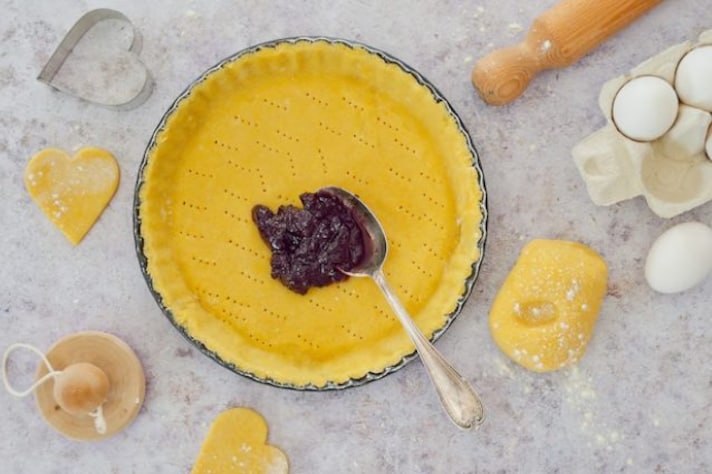
One of the most traditional pastry doughs for making tarts, pies and biscuits is pie dough, which is made with flour, butter, sugar and eggs and can be flavoured as desired, with lemon zest or vanilla. The secret to a great result is to have cold ingredients and work them quickly, with a step in the fridge once assembled, so as to roll out the dough without problems. There are numerous variations of shortcrust pastry: for example, there is whipped shortcrust pastry , suitable for preparing classic tea biscuits that does not require resting time and has a softer consistency, so you use a piping bag and not a rolling pin to shape it. Then there are the gluten-free, egg-free, water-based (free of ingredients of animal origin), oil-based alternatives and those with the addition of flours other than 00, such as almonds or hazelnuts , which give characteristic aromas and flavors.
2. Shortcrust Pastry
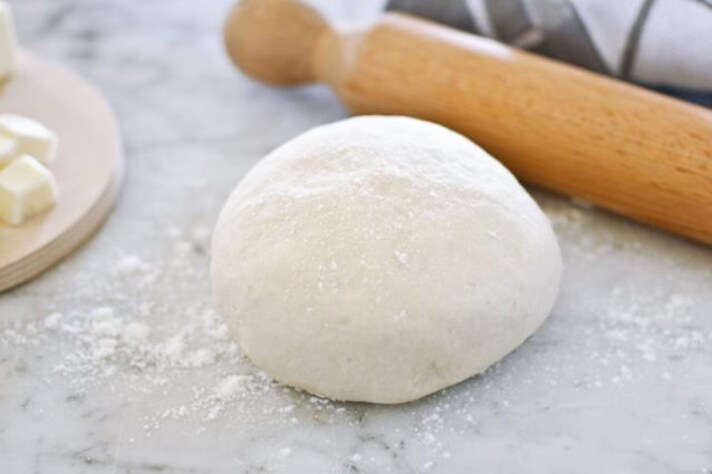
Shortcrust pastry is another classic for making tarts and tartlets, but it is also versatile for savory preparations, such as quiches. The dough is made with water, flour and butter: in this case too, it is important that the ingredients are cold, to proceed to the first phase of sandblasting, that is, creating a “crumbly” mixture by mixing cold butter in cubes and flour. Compared to shortcrust pastry, however, it does not contain eggs and sugar, proving to be an even more neutral base.
3. Puff Pastry

We choose it above all in its ready-made version in traditional sweet recipes (such as millefeuille) and more creative ones (such as squares and pinwheels) because it is very practical and easy to use. Making it at home, in fact, is not at all simple: although you only need flour, water and butter, puff pastry requires a lot of manual skill, as it requires two different processes (called pastel and panetto) that must be incorporated together by rolling them out with a rolling pin and folding them several times, until you obtain a thin and light sheet.
4. Sablée Pastry
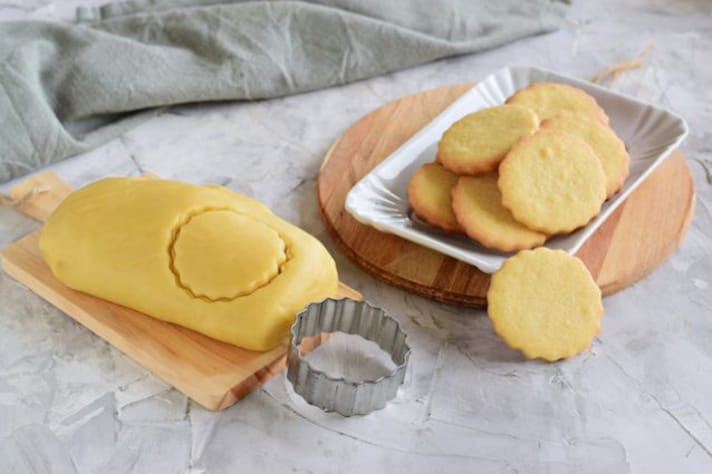
Sablée pastry is a shortcrust pastry perfect for biscuits – but also tarts and tartlets – which has the peculiarity of a dough made with butter, flour, icing sugar and egg yolks: working them together the result is a sandy consistency (hence the name) and buttery, which once cooked in the oven becomes crumbly and fragrant. In French pastry making it is preferred to classic pie dough: the quantity of butter, in proportion, is very generous.
5. Choux Pastry
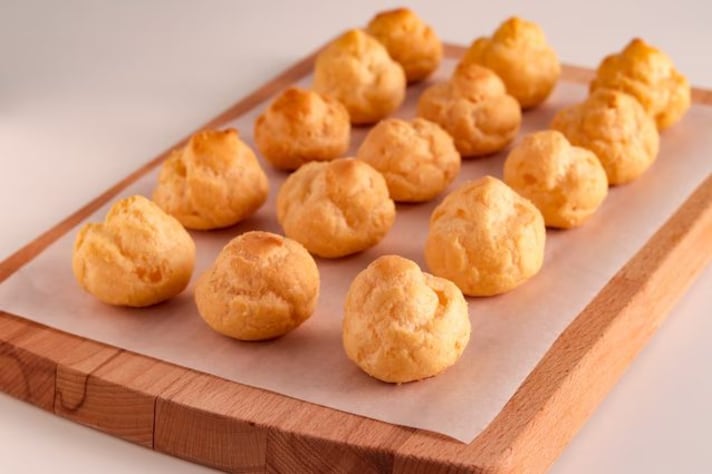
Also known as cream puff pastry, choux pastry is the base for making small sweets characterized by a cavity inside, perfect for being filled with cream and custards, becoming for example a delicious profiteroles and irresistible éclairs. The ingredients are water, butter, flour, eggs and a pinch of salt: the dough is first cooked in a saucepan, taking care to incorporate one egg at a time, and then in the oven, where it swells, browning slightly on the outside, while inside it is hollow.
6. Sponge Cake

Sponge cake needs no introduction: it is one of the most famous doughs in pastry making, including home baking. Its great merit is that it is (when done properly) soft and airy, giving lightness to desserts that are usually not, as it is often used for spectacular preparations with multiple fillings. To make it, all you need are eggs, flour and sugar (with the addition of potato starch and flavourings, such as vanilla or lemon): no, there is no yeast. To make it so soft and tall, you need to beat the eggs well and for a long time with an electric whisk. Being a neutral base, it undergoes various variations: the most common are cocoa sponge cake, gluten-free sponge cake and egg-free sponge cake.
7. Genoese Pasta
A close relative of the sponge cake, probably its progenitor, is the Genoese pastry, also called génoise. Also the protagonist of delicious desserts, it differs from the previous one in two factors: the first is the addition of butter, while the second involves the eggs whipped in a bain-marie. The final product is therefore softer and moister, making it perfect for layered cakes.
8. Victoria Sponge
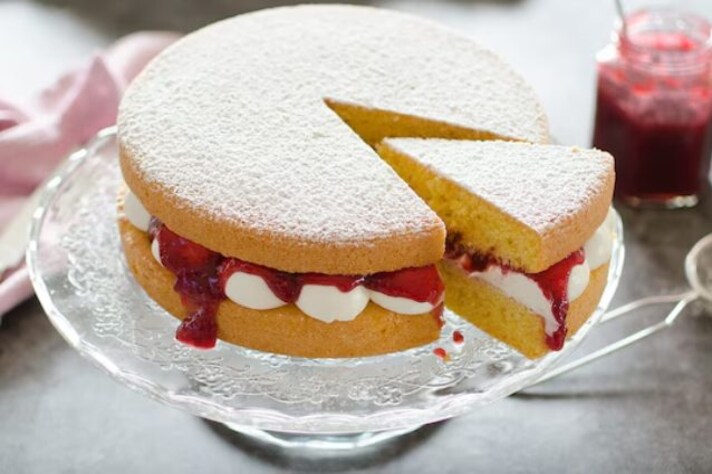
Similar to sponge cake, but more buttery is also the Victoria sponge: soft, high and, indeed, spongy, it is one of the must-have preparations in cake design, as it guarantees a stable base for cakes with spectacular decorations or big size. It is a classic that does not come from France, but from Anglo-Saxon countries, where the best-known application in Great Britain is in the Victoria sponge cake, Queen Victoria's favourite cake filled with whipped cream, spreadable cheese and raspberry jam.
9. Biscuit Dough

Still in the sphere of sponge cake, a dough that resembles it but has a more specific use is the one used to make biscuit dough. It is soft, elastic and flexible, less thick than sponge cake, designed primarily to be rolled up, ideal for making rolls filled with any shape, from jam to cream and strawberries.
10. Leavened Dough for Brioches
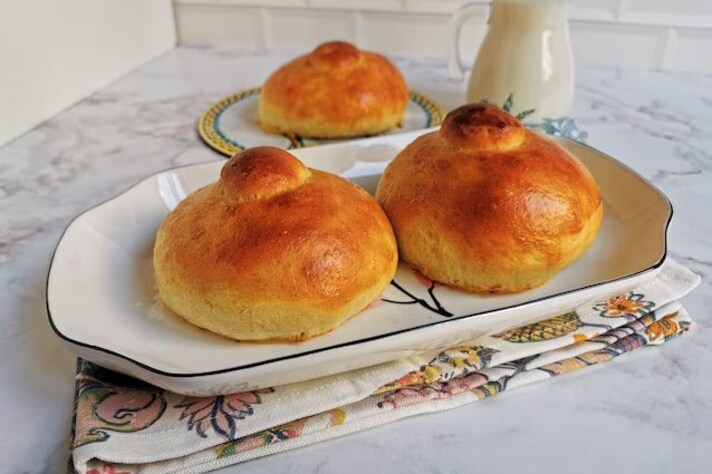
We conclude this overview with leavened dough for brioches, with which to make light and soft products, such as pain brioche, brioche col tuppo, chocolate brioche. There is no universal recipe, but the characteristic that distinguishes these sweet baked products is that of a rich dough (usually with flour, eggs, butter, milk, sugar) that undergoes more or less long leavening, in order to be very soft and not at all heavy.
;Resize,width=767;)
;Resize,width=712;)
;Resize,width=712;)
;Resize,width=712;)
